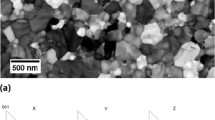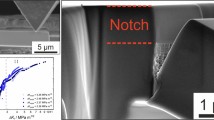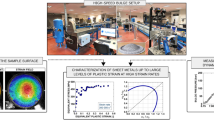Abstract
Accurate measurements of important tensile properties of thin metal foils are often quite difficult to achieve in uniaxial tests because of sample-preparation difficulties and the tensile instability called necking. Consequently, hydraulic bulge tests have been introduced as a successful means of suppressing these problems through the use of a simplified specimen geometry and biaxial rather than uniaxial tensile-stress states. Considerable effort has been made by various investigators to relate such biaxial stress-strain and ductility data to uniaxial data, generally following the assumption that the bulge is shaped like a spherical cap. The present study evaluates this assumption for foils by measuring actual shapes with unprecedented accuracy and detail using the two-source holographic technique and a polynomial-spline computer analysis of the resulting interferograms.
These measurements were made on nine specimens of 0.127-mm-thick annealed rolled copper foil which had been deformed into bulges of varying heights up to rupture. A comparison is made between the measured shapes and the spherical-cap shape generally assumed in the interpretation of bulge-test data. The spherical assumption gives results which are reasonably valid for the later stages of deformation. Indeed, the stress-strain curve obtained from bulge testing corresponds closely with the uniaxial tensile curves for this material. The strain at failure (i.e., elongation) was greater in the biaxial bulge test than in the uniaxial test but not nearly as great as the strain expected from a theoretical model proposed by Hill. However, all the specimens measured exhibited localized areas with larger radii of curvature. The presence of these “flats” may be associated with a mode of failure in the bulge test which corresponds to necking instability in the uniaxial test, and thereby account for the limited strain to failure.
Similar content being viewed by others
Abbreviations
- N R :
-
necking resistance
- P :
-
hydraulic pressure
- a :
-
bulge radius at base
- d :
-
bulge elevation at radiusr
- h :
-
bulge height (elevation at the pole)
- k :
-
proportionality constant (from Ludwik relation)
- n :
-
strain-hardening exponent (from Ludwik relation)
- r :
-
spherometer radius
- t :
-
foil thickness
- t o :
-
original foil thickness
- γ:
-
half-angle change in the propagation direction of the contouring beam
- Δh :
-
spacing of the interference planes of the contouring beam
- ε:
-
natural strain
- ε* :
-
instability strain (natural strain at the onset of necking)
- λ:
-
wavelength of the contouring beam
References
Prater, T. A. andRead, H. J., “The Strength and Ductility of Electrodeposited Metals—The Hydraulic Bulge Test,”Plating,36,1221 (1949).
Read, H. J. andPrater, T. A., “The Strength and Ductility of Electrodeposited Metals-Some Problems Relating to Specimen Preparation,”Plating,38,142 (1950).
Prater, T. A. andRead, H. J., “The Strength and Ductility of Electrodeposited Metals-Some Data on Acid-Copper Deposits,”Plating,30,142 (1951).
Read, H. J. andWhalen, T. J., “The Ductility of Plated Coatings,”Tech. Proc. Amer. Electroplaters Soc.,46,318 (1959).
Dudderar, T. D. and Koch, F. B., “Mechanical Property Measurements on Electrodeposited Metal Foils,” Properties of Electrodeposits—Their Measurement and Significance, R. Sard, H. Leidheiser, Jr. and F. Ogburn, Editors, Electrochemical Soc.,187 (1974).
Hill, R., “A Theory of Plastic Bulging of a Metal Diaphragm by Lateral Pressure,”Phil. Mag.,41,42 (1950).
Papirno, R., “Stress and Strain in Thin Films Bulged over Circular Openings,”J. Ap. Phys.,32,1175 (1962).
Brown, Jr., W. F. andThompson, F. C., “Strength and Failure Characteristics of Metal Membranes in Circular Bulging,”Trans. ASME,71,575 (1949).
Brown, Jr., W. F. andSachs, G., “Strength and Failure Characteristics of Thin Circular Membranes,”Trans. ASME,70,241 (1948).
Hildebrand, B. P. andHaines, K. A., “Multiple-Wavelength and Multiple-Source Holography Applied to Contour Generation,”J. Opt. Soc. of Amer.,57 (2),155 (1967).
Thomson, M. L., “Programs for Computation of Polynominal Splines,”Bell Laboratories, Murray Hill, NJ (1974).
Curry, H. B. andSchoenberg, I. J., “On Polya Frequency Functions IV: The Fundamental Spline Functions and Their Limits,”J. Anal. Math.,17,71 (1966).
Author information
Authors and Affiliations
Rights and permissions
About this article
Cite this article
Dudderar, T.D., Koch, F.B. & Doerries, E.M. Measurement of the shapes of foil bulge-test samples. Experimental Mechanics 17, 133–140 (1977). https://doi.org/10.1007/BF02324211
Received:
Revised:
Issue Date:
DOI: https://doi.org/10.1007/BF02324211




